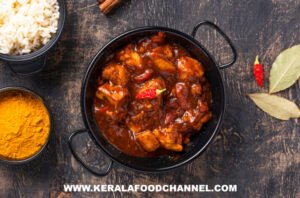Delicious Poha Recipe: How to make easy Poha?
Poha, also known as flattened rice, is a traditional Indian breakfast dish popular for its delightful flavors, light texture, and easy preparation. This dish is made from rice that has been parboiled and flattened into light, dry flakes. Poha is not only quick to prepare but also very versatile, allowing for various ingredients to be added. Its unique flavor profile, often enhanced with spices, onions, mustard seeds, and green chilies, coupled with the crunch of peanuts and fresh coriander, makes it a beloved meal across many regions in India. Perfect for breakfast or a light snack, Poha is a dish that can be enjoyed by everyone, from beginners to seasoned home cooks.
Ingredients
To make a classic Poha recipe, gather the following ingredients:
For 2 servings:
- 2 cups (150g) Poha (flattened rice)
- 1 medium onion, finely chopped
- 1 medium potato, diced (optional)
- 2 green chilies, slit lengthwise
- ½ teaspoon mustard seeds
- ½ teaspoon turmeric powder
- Salt to taste (approximately ½ teaspoon)
- 1 tablespoon oil (preferably mustard or vegetable oil)
- 2 tablespoons roasted peanuts (optional)
- 1 tablespoon fresh lemon juice
- 2 tablespoons fresh coriander leaves, chopped
- ½ cup green peas (fresh or frozen)
- 1 tablespoon grated coconut (optional)
- Sugar, to taste (optional)
For serving:
- Lemon wedges
- Papad (crispy Indian flatbread)
- Indian chai or masala tea (optional)
Instructions
Step 1: Preparing the Poha
- Rinse the Poha:
- Place the Poha in a fine-mesh sieve and rinse it under cold running water for about 2-3 minutes. Gently swirl the flakes with your fingers to ensure they soak up some moisture. The Poha should be soft but not mushy. Drain well and set aside.
- Optional: Add Ingredients:
- If using diced potatoes, boil them in salted water until tender (about 5-7 minutes) or steam them in a steamer. Drain and set aside.
Step 2: Cooking the Poha
- Heat the Oil:
- In a large skillet or frying pan, heat 1 tablespoon of oil over medium heat.
- Add Spices:
- Once the oil is hot, add the mustard seeds. Allow them to crackle for a few seconds.
- Sauté Onions and Green Chilies:
- Add the finely chopped onions and slit green chilies to the skillet. Sauté until the onions turn translucent, about 3-4 minutes.
- Incorporate Potatoes and Peas:
- If using potatoes, add the boiled and diced potatoes at this stage along with the green peas. Stir well and cook for another 2-3 minutes.
- Add Turmeric and Salt:
- Sprinkle in the turmeric powder and salt, mixing everything well. Sauté for an additional minute to allow the spices to infuse.
- Combine with Poha:
- Add the rinsed Poha to the skillet and gently fold it into the mixture, ensuring even distribution without breaking the flakes. Cook for about 2-3 minutes on low heat, allowing the Poha to absorb the flavors.
Step 3: Final Touches
- Add Peanuts and Lemon Juice:
- Stir in the roasted peanuts, fresh lemon juice, and adjust the salt and sugar as desired. Cook for another minute.
- Garnish:
- Remove the skillet from heat, and garnish with chopped coriander leaves and grated coconut if using.
Step 4: Serving Suggestions
- Serve the Poha hot, alongside lemon wedges for an extra zing, and crispy papad for crunch.
- Pair it with a cup of steaming Indian chai or masala tea for a complete breakfast or snack experience.
Nutritional Information
Poha is not only delicious but also comes packed with nutritional benefits:
- Low in Calories: Poha is light on the stomach, making it an excellent choice for those looking to maintain or reduce their weight.
- Rich in Carbohydrates: Flattened rice provides easy-to-digest carbohydrates, giving a quick energy boost.
- High in Iron: The inclusion of peanuts and green peas adds iron and protein to the dish, contributing to overall health.
- Fiber-Rich: Using potatoes and peas ensures a good amount of dietary fiber, aiding digestion and enhancing gut health.
- Versatile and Customizable: You can add seasonal vegetables like carrots or bell peppers to enhance the nutritional profile even further.
Additional Tips for Perfect Poha
- Choosing the Right Poha: Look for medium or thick Poha for better texture, as thin varieties may become too mushy.
- Soaking Time: Soaking the Poha for the right duration is key—just enough for them to soften but not to become excessively wet.
- Vegetable Variations: Feel free to add other vegetables such as diced carrots, bell peppers, or fresh peas to increase nutrients and flavor.
- Spice Adjustments: Adjust the number of green chilies based on your spice tolerance.
Conclusion
Poha is a beloved dish that beautifully encapsulates simplicity and flavor, making it a staple in many Indian households. By preparing this dish, you not only enjoy its delightful taste but also benefit from its wholesome ingredients. Whether you’re an experienced cook or just starting your culinary journey, this Poha recipe is a fantastic addition to your repertoire. So, gather your ingredients and savor the delightful experience of making this traditional dish right in your kitchen!






